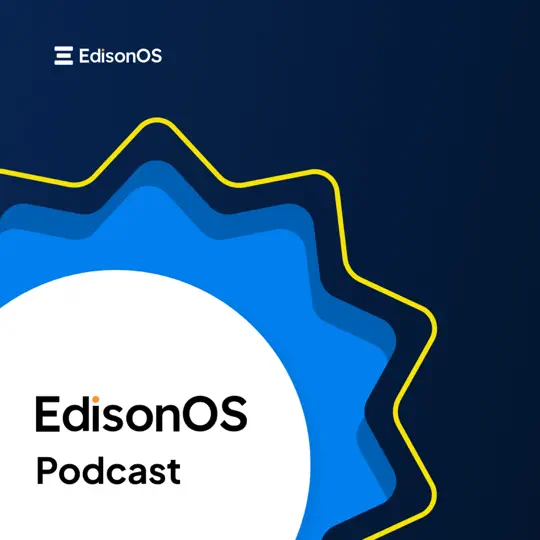




Key Takeaways
- A low score is relative, and it depends on your goals and target schools.
- Many students improve significantly with focused retakes or structured prep.
- Test-optional and holistic admissions policies give you flexibility.
A low SAT or ACT score can feel like a setback, especially after weeks of studying and practice tests. But it is not the end of your college journey. Many students recover from disappointing results—some by retaking the test, others by applying to test-optional schools, and many by strengthening the rest of their application.
Your test score is just one part of your academic profile, not the whole story. Colleges look at much more—your GPA, coursework, extracurricular involvement, essays, and letters of recommendation all matter. We will help you understand what your score means, what to do next, and how to move forward with clarity and confidence. Keep reading.
What counts as a “low” SAT or ACT Score?
“Low” is a subjective term. It depends entirely on the colleges you are targeting.
Generally, a SAT score below 1000 or an ACT score below 20 is considered below average nationally. However, what matters more is how your score compares to the middle 50% range of accepted students at your target schools.
For example:
- The University of Michigan has a middle SAT range of 1340–1530, so a 1150 would be considered low there.
- At Arizona State University, where the middle range is around 1130–1380, that same 1150 is perfectly acceptable.
So, instead of labelling your score “bad,” see it as a starting point for strategy—do you retake, go test-optional, or shift your college list?
Immediate steps after receiving low scores
The first thing to do is take a deep breath. It is perfectly normal and okay to feel embarrassed or panicked when you see a lower score than expected. But at the same time, remember that dwelling on the score will not help you move forward. Here is a practical roadmap for your next steps:
1. Don’t panic
Low scores are more common than you think, and improvement is absolutely within reach. According to the College Board, over 55% of high school juniors who retook the SAT as seniors raised their scores. Low scores often reflect a lack of strategy or timing, not a lack of intelligence. Take a few days to reset mentally before deciding your next step.
2. Analyze your score report carefully
Your score report itself will guide you towards improvement. Instead of just looking at the total score, dig deeper. Identify which sections cost you the most points—Was it algebra or data analysis on the SAT? Science reasoning or reading speed on the ACT? Try finding a pattern, like running out of time, misreading questions, or second-guessing. This will guide where to focus your next round of prep.
Create a short “error log.” Write down the question types you missed and why. Over time, you will start seeing trends—and that is where your biggest gains lie.
3. Meet with a counsellor or tutor
A trained professional can help you look at the bigger picture. Together, review your score trends, school goals, and options:
- Retake the test: if you are close to your target range or confident you can improve with better prep.
- Go test-optional: if your GPA and activities already stand strong.
- Adjust your college list: to include schools where your current scores are competitive.
Counsellors or tutors can also recommend personalized prep strategies—for instance, using adaptive tools like EdisonOS to pinpoint exact weak spots and simulate real testing conditions.
4. Create a focused action plan
Once you’ve decided on your next move, commit to it.
- If retaking: set a timeline of 6–10 weeks, schedule practice tests, and focus on specific weaknesses instead of starting over.
- If going test-optional: spend that same energy polishing your essays, grades, and extracurricular story.
- If adjusting your college list: research schools that value GPA, essays, and recommendations more heavily than scores.
Whatever you choose, consistency matters more than perfection. A clear plan helps you stay calm, focused, and confident about your next step.
Should you retake the test?
For most students, retaking the SAT or ACT is the best first step—especially if you were within 100–150 SAT points or 2–4 ACT points of your target range.
When it makes sense to retake:
- You prepared independently the first time and now plan to use a structured study plan.
- You had test anxiety, illness, or timing issues during the first test.
- You are applying to selective schools where a small score increase could improve your chances.
Expected improvement:
On average, students gain about 100–150 points on the SAT and 2–4 points on the ACT between their first and second attempt, provided they study strategically.
Timeline and next steps:
Plan your retake within 2–3 months of your first attempt. The material will still be fresh, and you will have enough time to address weaknesses. You can check upcoming test dates on the College Board or ACT.org websites.
Consider test-optional or test-blind colleges
Not every student needs to retake the test. The rise of test-optional policies means you can still apply to excellent schools without submitting scores.
Test-optional
Test-optional colleges allow students to choose whether or not to submit SAT or ACT scores. If you believe your scores strengthen your application, you can include them—but if not, you will be evaluated based on other factors like GPA, essays, and extracurriculars.
Top-Ranking Test-Optional Colleges in 2025-26
- Princeton
- Duke
- Northwestern
- University of Chicago
- Columbia
- University of California, Los Angeles
- University of California, Berkeley
- Rice
- Vanderbilt
- University of Notre Dame
- University of Michigan, Ann Arbor
- Emory University
- University of North Carolina, Chapel Hill
- University of Southern California
Test-blind
Test-blind colleges, on the other hand, do not consider test scores at all, even if you submit them. They focus entirely on academic performance, personal achievements, and overall potential.
Top-Ranking Test-Blind Colleges
- University of California, Berkeley (UC Berkeley)
- University of California, Los Angeles (UCLA)
- University of California, San Diego (UCSD)
- University of California, Davis (UC Davis)
- University of California, Santa Barbara (UCSB)
- University of California, Irvine (UC Irvine)
- University of California, Santa Cruz (UCSC)
- Pitzer College
- Reed College
- Dickinson College
- University of San Diego (USD)
- The New School
- Lewis & Clark College
However, keep in mind: if your GPA or extracurriculars are average, a strong test score can still boost your profile—so skipping tests entirely should be a strategic choice, not an emotional one.
How to strengthen your college application with a low test score
If you are not retaking the test, you can still present a strong, competitive application. Focus on the parts of your profile that colleges weigh most heavily.
Focus on GPA and coursework
Your GPA and course rigour often weigh more than standardized tests. Take or highlight challenging classes—like AP, IB, or dual-enrollment courses—to demonstrate academic ability. If your test scores are low but your GPA shows steady improvement, colleges see that as resilience and discipline.
Write a compelling personal essay
Your essay can show what numbers can’t—your growth, personality, and motivation. If test anxiety or personal challenges affected your score, briefly mention it, but focus on what you learned and how you overcame it. Use this space to show depth and self-awareness, not excuses.
Highlight extracurricular impact
Admissions officers want to see initiative, not just participation. Did you start a club, lead a project, or volunteer regularly? Emphasize impact—how your work benefited others or showed leadership. For example: “Founded a peer tutoring program that supported 30+ students” stands out more than “Tutored classmates.”
Secure strong Letters of Recommendation
Teachers can vouch for qualities that test scores can’t—grit, curiosity, collaboration. Choose teachers who know you personally and can provide vivid examples of your effort or growth.
Adjust your college list strategically
A smart college list includes a mix of reach, match, and safety schools to keep your chances balanced. If your SAT or ACT score is below the 25th percentile for your top choices, add more test-optional or holistic-admissions colleges where essays, GPA, and extracurriculars matter more.
You can also use tools like College Board’s BigFuture, Naviance, or Common Data Sets to compare score ranges and acceptance rates. This makes sure that every option is data-informed and not guesswork.
You might discover great colleges that fit your profile better—schools like University of Delaware, Clark University, and Denison University often welcome strong applicants regardless of test scores.
A balanced list keeps your options open and ensures that no single score determines your future.
How EdisonOS helps students bounce back
EdisonOS supports both retakers and students going test-optional by combining analytics, adaptability, and structure. Here’s how:
- Diagnostic assessments: EdisonOS pinpoints your exact weak spots in Math, Reading, and Writing through precise performance data. Instead of guessing, you’ll see detailed analytics showing which question types cost you the most points and where quick wins are possible.

- Adaptive practice tests: Practice in the same environment you’ll face on test day. The platform mirrors the Digital SAT and ACT format, with adaptive question sets, built-in timers, and realistic digital tools like Desmos. This helps you build familiarity and confidence before your next attempt.
- Personalized study plans: No two test-takers prepare the same way. EdisonOS uses your diagnostic data to design a targeted study roadmap. It adjusts pacing, question difficulty, and review cycles so you’re focusing on high-impact areas that drive score jumps.

- Progress dashboards: Every improvement becomes visible. Track your accuracy, timing, and score trends after each test. Tutors and parents can access progress reports too—so your hard work isn’t just felt, it’s seen in real numbers.

EdisonOS helps you move from “I don’t know what went wrong” to “I know exactly what to fix.” When you are retaking the test or building a test-optional plan, it turns your recovery into a structured, measurable process.
The bottom line
A low SAT or ACT score is simply a data point and not proof of failure. What matters is what you do next. Some students raise their scores on a retake, others shine through essays and grades, and many thrive at test-optional colleges.
Colleges look for consistency, effort, and authenticity. A single test does not define you—but how you respond to a setback surely can.
Use your score as feedback, not failure. Create a plan, commit to it, and use platforms like EdisonOS to guide your preparation. Whether you improve your score or shift your strategy, there are always ways forward.
Take EdisonOS’s free Digital SAT practice test and go through its reliable and helpful blog to rebuild your confidence, structure your prep, and take your next step with clarity.
Frequently asked questions
A SAT score below 1000 or an ACT score below 20 is generally considered low. However, “low” depends on your target schools’ average ranges.
Yes. There are a lot of colleges that are test-optional or test-blind. Strong grades, essays, and extracurriculars can offset weaker scores.
If you are within 100–150 SAT points or 2–4 ACT points of your target, retake. If you are far below or prefer a holistic application, it might be a good decision to go test-optional.
With structured study, students often raise SAT scores by 100–150 points. Use reliable tools like EdisonOS and focus on identifying weak areas and improving them.
No. Over 2000 colleges do not require standardized test scores like the SAT or ACT, including top colleges like The New School, Lewis & Clark College, and UCLA.
If necessary, address it briefly in your essay or additional information section—focus on lessons learned and growth, not excuses.
Tutors Edge by EdisonOS
in our newsletter, curated to help tutors stay ahead!
Tutors Edge by EdisonOS
Get Exclusive test insights and updates in our newsletter, curated to help tutors stay ahead!











.png)
.webp)
